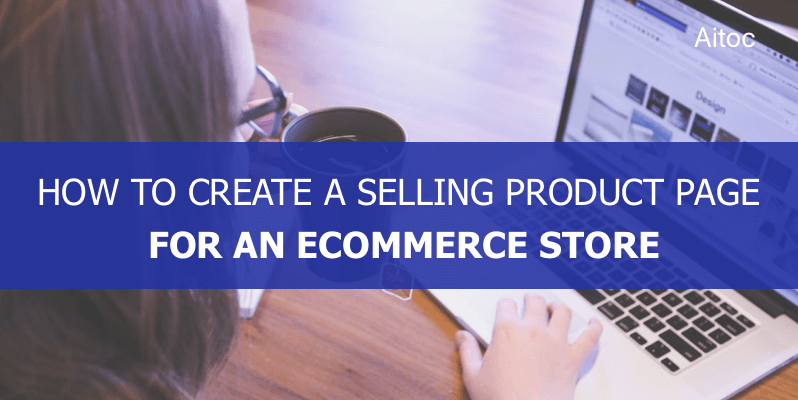
Improve Product Pages to Make Your Store Irresistibly Attractive
What makes a great online store? There are multiple answers to this question. A wide range of products and services, an excellent site design, an outstanding customer service, and many more. But paying attention to the website as a whole, e-merchants often skimp on what is no less important - product pages content.
Online stores spend much time adding numerous products to the catalog and optimizing product pages for SEO, to eventually achieve nothing when potential customers land on a product page.
There’s one reason for that: users don’t find what they are looking for - the details. Deciding on whether to order a product or a service one wants to know about it as much as possible, especially if the price is high and no returns are accepted. But many online stores provide only basic details, making it impossible to arrive at purchasing decision.
In this article, we are going to cover the necessary steps towards optimizing product pages to make them visually compelling. Moreover, we will share some useful tips for Magento websites, in particular. Kepp on reading to discover them all!
Use a Catchy Title
People tend to judge a book by its cover, and a title is the cover of your product page. So try to make it both concise and descriptive, besides including a focus keyword in it to increase product visibility on the web.
Creating a unique title is a great tactic for unknown brands that want to stand out from similar products and catch the attention of the online audience.
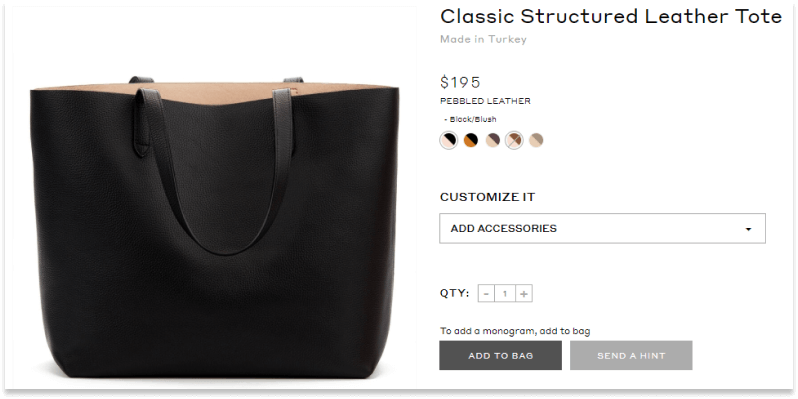 Source: Cuyana
Source: CuyanaWrite Detailed Descriptions
Craft compelling description of your products to entice shoppers into becoming your customers. Product descriptions should include all the necessary details about the product, highlighting its features and benefits.
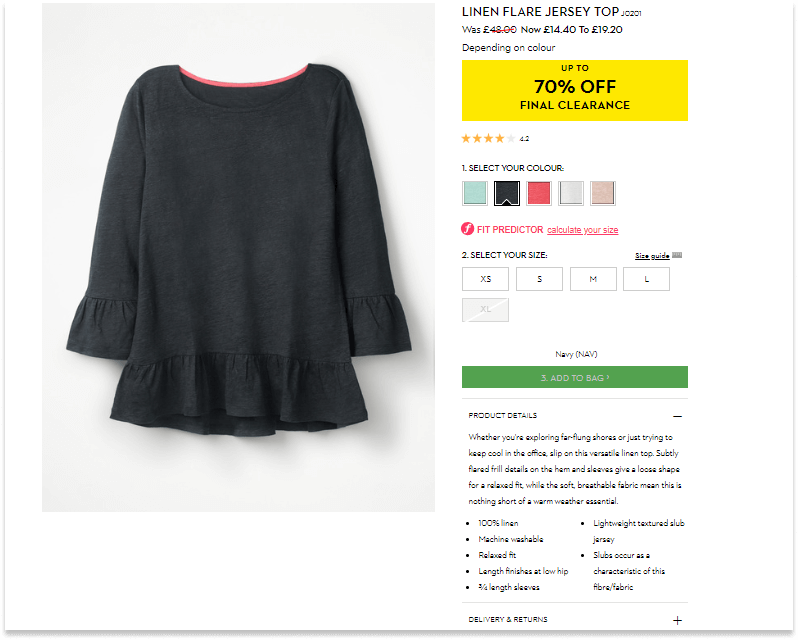 Source: Johnnie Boden
Source: Johnnie BodenYou may make use of bullet points to increase the readability of the content.
Add High-Quality Images, 360-degree Views, and Videos
Shopping online, people cannot touch the product on offer. That’s why it’s essential to give store visitors an opportunity to see every tiny detail of an item.
Being visual creatures, shoppers expect high-quality images that show the product from different angles and/or its 360-degree view so that they can imagine how the item looks like in real life.
 Source: The Kooples
Source: The KooplesWhen selecting visual content for the page, pay attention to the following things:
- High-quality images look more appealing than others
- No stock images. Use unique images or product photos
- Make sure that images are large enough. Large images improve conversion rates
- Enable zooming if possible
- Let prospects see the item from different angles. Think of using 3D images
- Use videos to show how the product looks like in real life. Not only video materials help people get a better picture of a product, but, generally, they significantly increase conversion rates.
Display Color Variations
If your product comes in different colors, add images for all the color versions. Shoppers want to see what exactly they will get. Making it impossible, you are likely to lose a lead.
Adding images with color variations (at least tiny ones) you remove customers’ doubts and encourage them to hit the ‘Buy now’ button.
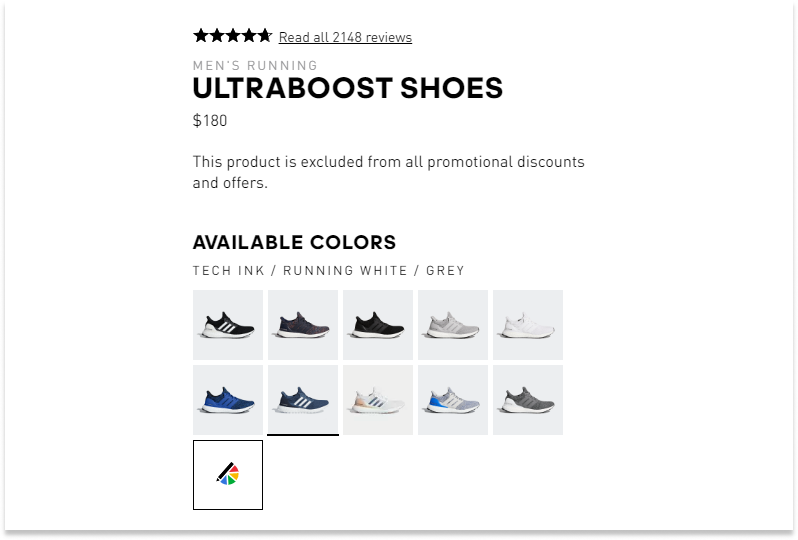 Source: Adidas
Source: AdidasEnable Reviews on the Website
Users are often skeptical about product claims made by sellers. It means that a potential buyer is much more inclined to rely on a third-party review than on an item description provided on its page.
Enabling product reviews you build customers’ confidence in your product. Even negative reviews may do you a good turn - people won’t believe that the product is perfect. You can also get ideas of product improvements from them. One more tip: respond to reviews as it allows building strong and trustworthy relationships with clients.
There are different ways to encourage customers to leave more reviews. If you are running a Magento store, the Product Reviews & Ratings module can help you with this task.
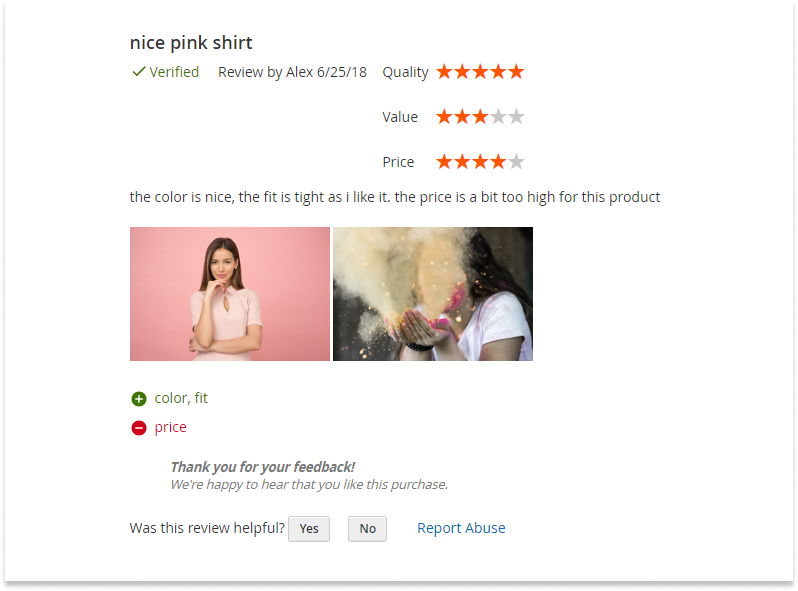
Introduce an FAQ Section
There are always some common questions people ask about the product. FAQ is a good method of satisfying this customers’ need. Why do you need it on product pages? Product FAQ will save you and your prospects’ time allowing shoppers to get all the necessary information without contacting you directly.
Here is what you may use as a foundation for your FAQ:
- Customer requests;
- Product reviews;
- Data from customer surveys;
- Information provided by the manufacturers;
- Etc.
 Source: Bose
Source: BoseEnable a Wish List
Sometimes consumers stumble upon attractive offers when they simply surf the Internet. If users were not searching for the product before visiting its page, they would definitely want to save the product for later.
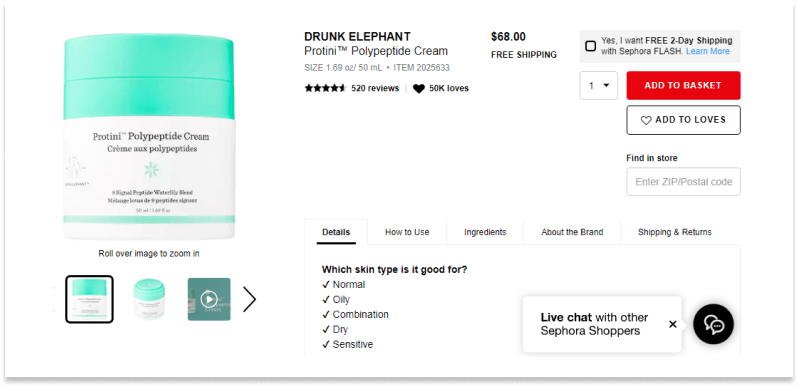
Clients won’t bother creating a separate bookmark for the product page, but adding the item to the wish list is a no-brainer. By allowing shoppers to add products to the wish list, you boost your chances to see them again at your web store. You may also let users create gift registries right in your store.
Display Out-of-Stock Items
When customers come to your store they want to get the product they are looking for. Show consumers that you care about their needs by allowing them to get notified when out-of-stock items are again available or offering them to pre-order such products in advance.
By providing the subscription to back-in-stock notifications or the item pre-ordering service, you will build trust with your existing and potential clients, and therefore increase conversions and grow your sales.
Provide Additional Informational Materials
But to go even further, consider uploading extra information to the product page. This can be a user guide, a product warranty document, a video overview, and many others. Any of these useful materials will help potential customers to get a clearer understanding of a product and its features, increasing the chances of the purchase.
In Magento, you can add those with the help of Product File Attachments by Aitoc. The extension allows store admins to add links to external sites (e.g., to a YouTube video) and upload manuals, tutorials, and other materials of any format. Here's a short guide on how to enable that.
1. Creating a new widget
The first step toward making your product pages more informative is to create a new widget to be placed on these pages. Go to Content > Elements - Widgets and hit the ‘Add Widget’ button.
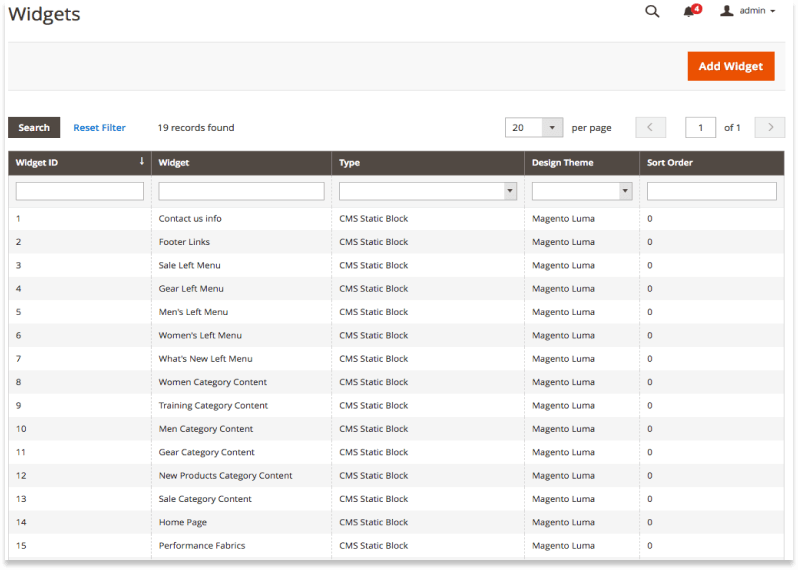
On the widget creation page, select ‘Aitoc Product File Attachments’ on the ‘Type’ dropdown menu. Then choose your current theme in click ‘Continue’.
Add a custom widget title. You will need it for internal reference only. The next thing you need to do is assign the new widget to as many Store Views as you need.
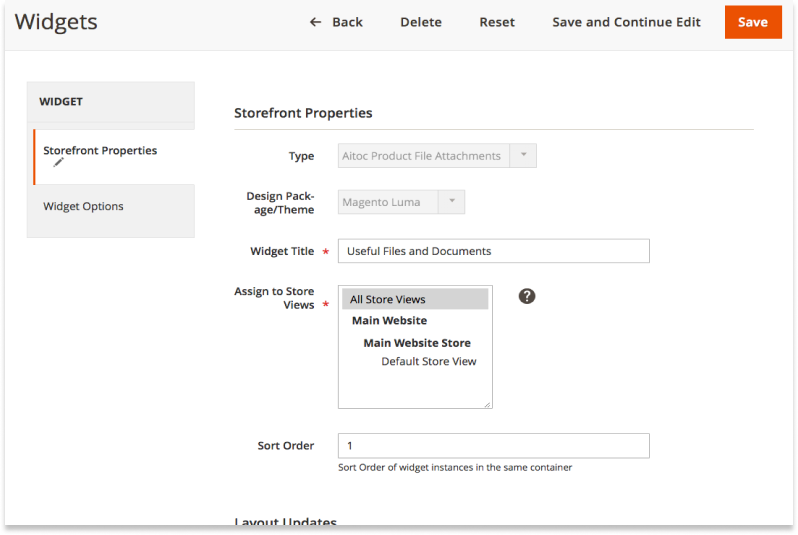
In the ‘Layout Updates’ section, you can configure the widget’s position on product pages. Note: this widget can be added only to product pages, otherwise it won’t be displayed. If the widget is enabled for all the product types, you won’t be able to manage its position per product type/product.
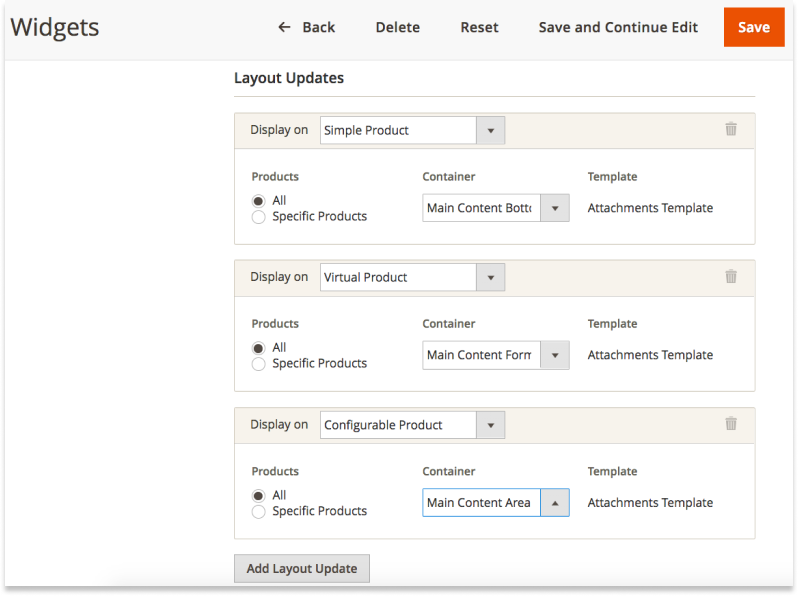
When complete, proceed to the ‘Widget Options’ section to add a custom title that will be shown on the storefront. Now you can save the widget to activate it.
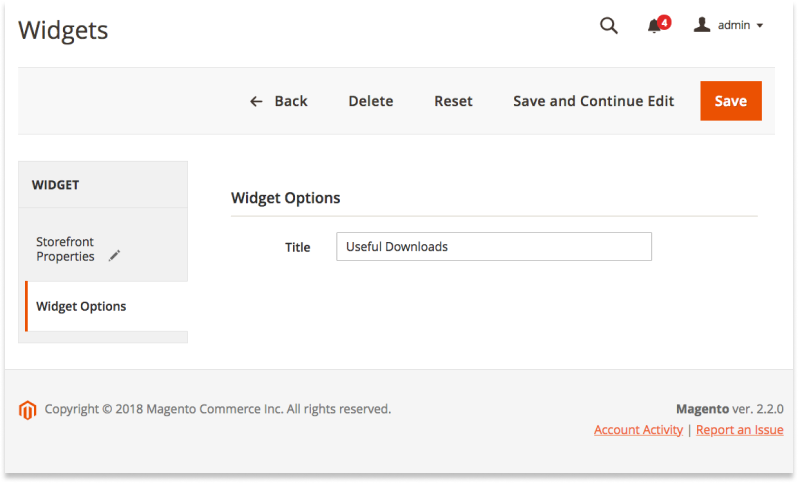
2. Configuring general settings
To access General Settings of the module, navigate to Stores > Settings > Configuration > AITOC EXTENSIONS - Product File Attachments.
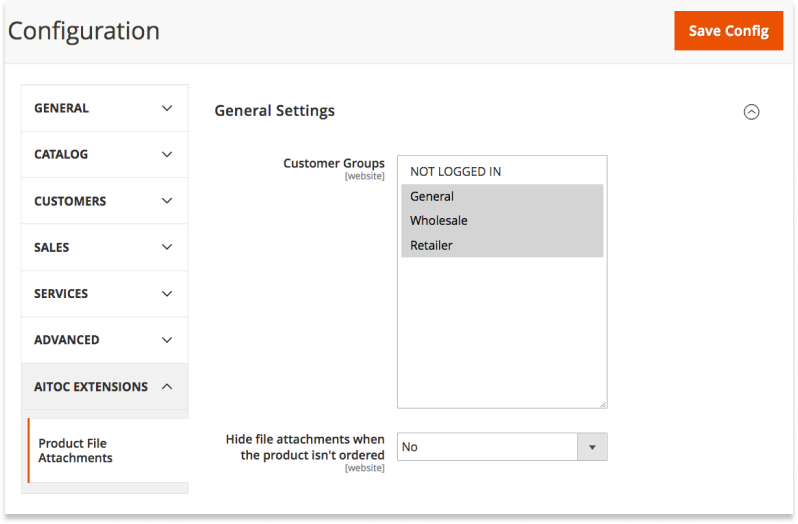
Here you can configure the visibility of file attachments per customer groups. And that’s not all! You may even disable them for those customers who haven’t ordered the product yet.
![]()
The module has a built-in library of icons you can use. You can also always add new ones or replace existing icons.
Go to Catalog > Product File Attachments > Icons to access the available icon set. To add a new icon, hit the ‘Add New Icon’ button. When adding a new asset, make sure to specify a file extension to associate with it (e.g., txt).
![]()
3. Assigning file attachments to products
Open the product in the edit mode and scroll down to ‘Product File Attachments by Aitoc’ to add attachments and/or external links to its page. You need to introduce custom labels to each attachment and link as these attachment-specific labels to be displayed on the storefront. You can manage the attachments’ visibility, delete them and even hide those attachments you temporary don’t want to use. Leverage per Store View configuration if your store is available in different languages.
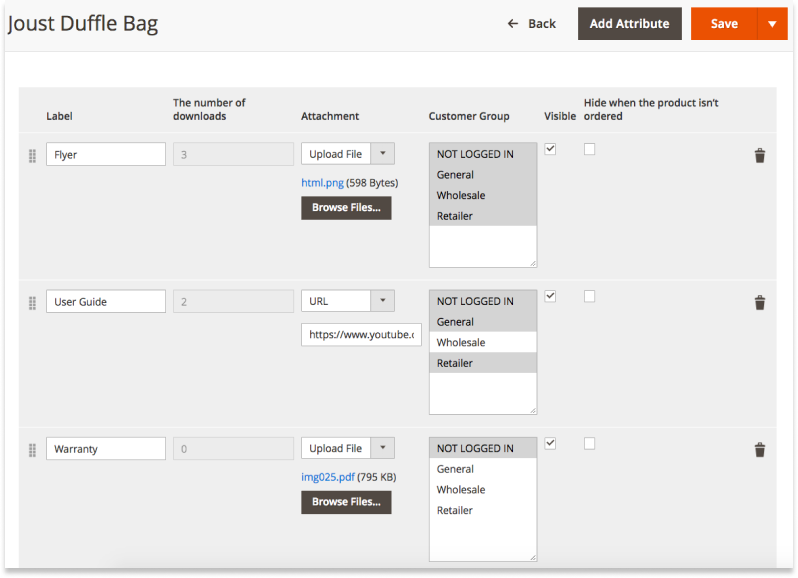
From the same page, you can also track product-specific file downloads and link clickthroughs. Save the changes and the attachments will appear on the product page.
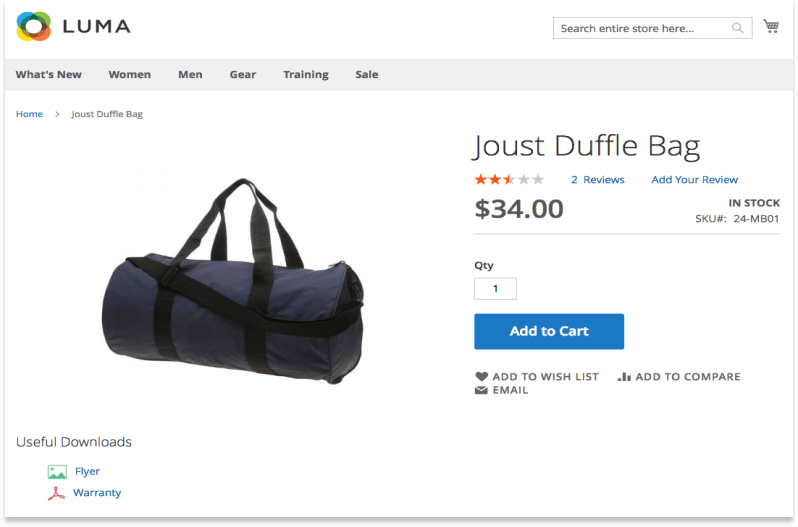
4. Tracking user engagement
The extension also provides admin users with detailed lifetime statistics of file downloads and link clickthroughs for all the product pages. To see it, go to Reports > Products - Attachments
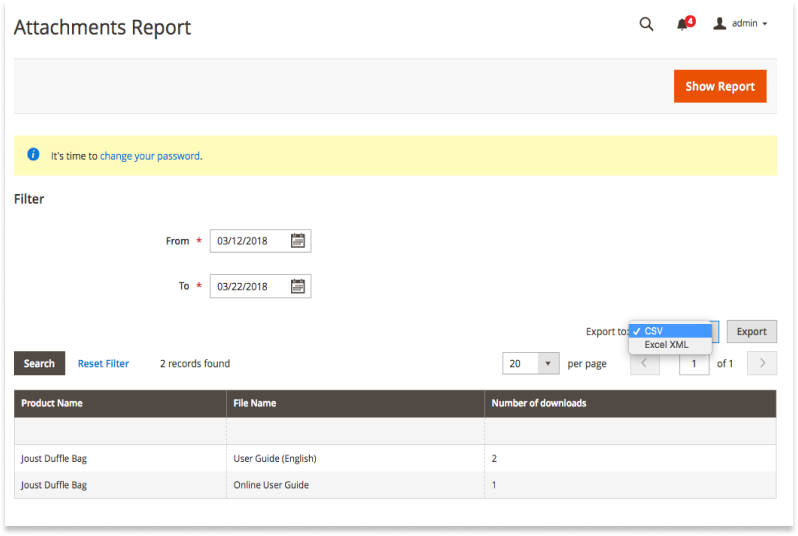
You can export the report to a CSV or Excel XML file.
Wrapping Up
Online merchants often underestimate the importance of product pages for their sales. But they play a crucial role when it comes to making a purchasing decision. If your product page is not informative enough, a shopper may buy from another store even your price is much lower.
We’ve guided you through basic steps that can help you improve your product pages. We believe that they will help you achieve higher sales.
Have any questions? Drop us a line at [email protected].
